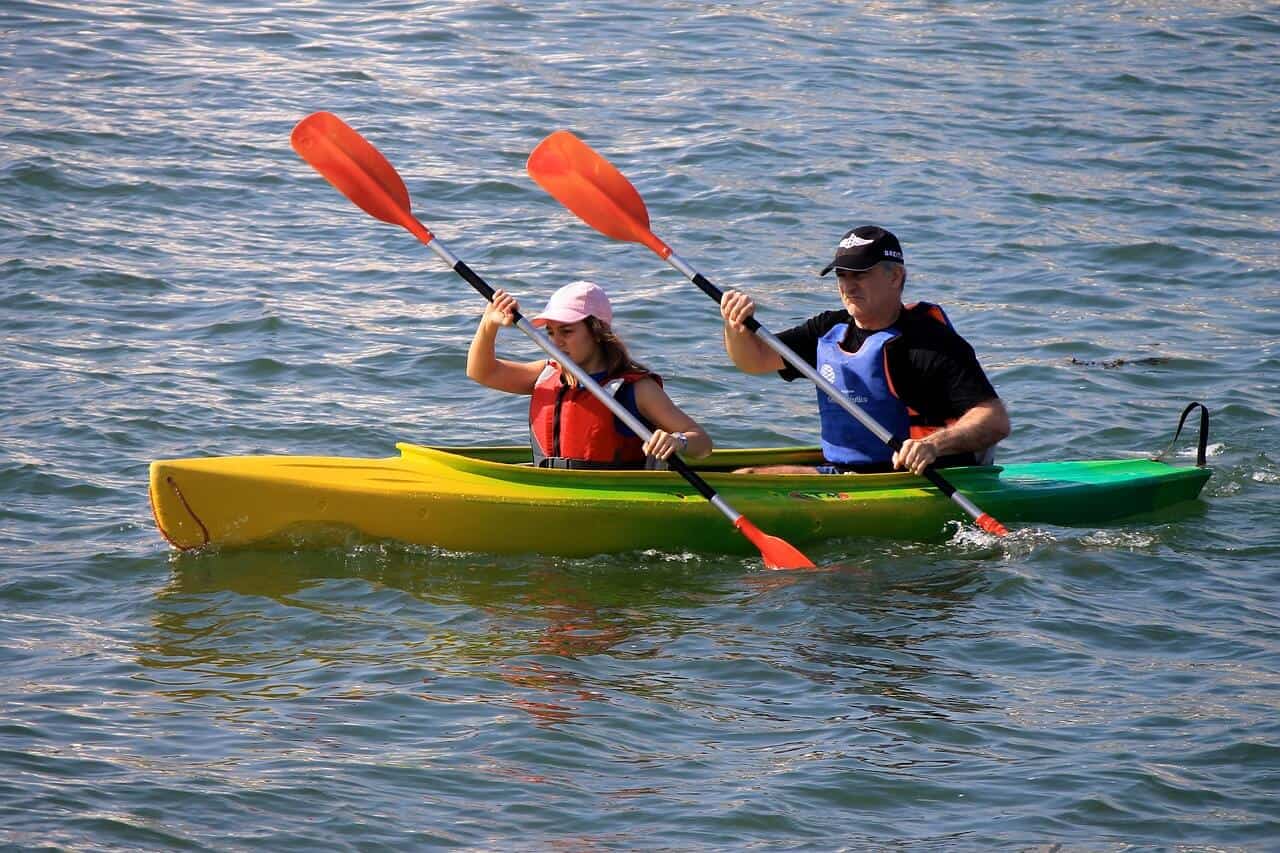Finding Peace: Kayaking as a Stress-Relief Activity

In the hustle and bustle of modern life, stress has become an unwelcome companion for many. The importance of finding effective stress relief cannot be overstated, and one such remedy lies in the serene waters of kayaking. As we delve into this article, we’ll explore the therapeutic benefits of kayaking and how it can be a powerful tool for achieving inner peace.
Understanding Stress and its Impact
Stress is an inevitable part of life, affecting both our physical and mental well-being. From the pressures of work to personal challenges, stress can manifest in various forms, leading to health issues and a diminished quality of life. Recognizing the impact of stress on our lives is the first step towards managing it effectively.
Chronic stress can contribute to conditions such as anxiety, depression, and cardiovascular problems. The importance of stress management cannot be overstated, as it plays a crucial role in maintaining overall health. Effective stress relief strategies are essential to counter the negative effects of stress on the mind and body.
The Connection Between Nature and Stress Relief
Nature has an incredible ability to heal and restore balance to our lives. The calming influence of natural surroundings has been acknowledged for centuries, and contemporary research continues to affirm the positive impact of nature on mental well-being. Engaging in outdoor activities has been shown to reduce stress levels and promote a sense of tranquility.
The healing power of nature, coupled with stress relief activities, creates a harmonious blend that enhances the overall experience. Whether it’s the sight of lush greenery, the sound of rustling leaves, or the feeling of fresh air against the skin, nature provides a therapeutic escape from the stresses of daily life.
What is Kayaking?
Kayaking involves sitting in a narrow boat, known as a kayak, and using a double-bladed paddle to propel oneself through the water. The design of the kayak allows for nimble maneuvering and makes it suitable for various water conditions. The sport has evolved over the years, with different types of kayaking activities catering to diverse interests and skill levels.
Different Types of Kayaking Activities
Kayaking offers a range of experiences, from tranquil recreational paddling to exhilarating whitewater adventures. Understanding the various types of kayaking activities ensures that individuals can choose an approach that aligns with their preferences and comfort levels.
Accessibility and Beginner-Friendly Aspects of Kayaking
One of the appealing aspects of kayaking is its accessibility to people of all ages and fitness levels. Modern kayaks are designed with user-friendly features, making them suitable for beginners. With proper guidance and equipment, individuals can quickly grasp the basics of kayaking and embark on a journey of stress relief in the great outdoors.
Kayaking as a Stress-Relief Activity
Immersion in Nature: A Key Component
The essence of kayaking as a stress-relief activity lies in the immersion in nature. Unlike indoor exercises, kayaking allows individuals to connect with the outdoors, surrounded by the soothing sights and sounds of water and wildlife. This immersion provides a mental break from the stresses of daily life, promoting relaxation and a sense of well-being.
Physical Exercise and its Stress-Reducing Effects
Beyond its tranquil setting, kayaking involves physical activity that contributes to stress reduction. Paddling engages multiple muscle groups, providing a full-body workout. Regular exercise has been proven to release endorphins, the body’s natural mood enhancers, leading to improved mental clarity and reduced stress levels.
The Therapeutic Sound of Water: Impact on Mental Well-being
The rhythmic sound of water lapping against the kayak and the gentle splashing of the paddle create a therapeutic ambiance. These natural sounds have a calming effect on the mind, promoting a meditative state that is conducive to stress relief. The auditory experience of kayaking adds a unique dimension to the overall sense of tranquility.
In the upcoming sections, we will explore practical tips for stress-relief kayaking, share personal experiences and testimonials, and delve into expert insights on how kayaking contributes to stress management. Join us on this journey to discover the rejuvenating benefits of kayaking for your mental well-being.
Practical Tips for Stress-Relief Kayaking
Choosing the Right Kayak and Equipment
Selecting the appropriate kayak and equipment is crucial for an enjoyable and stress-relieving kayaking experience. Different types of kayaks cater to various activities, such as recreational kayaking, sea kayaking, or whitewater kayaking. Consider factors like stability, maneuverability, and storage space based on your preferences and the type of water you plan to explore.
Investing in quality equipment, including a well-fitted life jacket, a comfortable paddle, and proper safety gear, ensures a safe and enjoyable kayaking experience. These considerations contribute to the overall sense of security, allowing participants to focus on the stress-relief aspects of the activity.
Selecting Ideal Kayaking Locations
The choice of kayaking location significantly influences the stress-relief benefits of the activity. Serene lakes, meandering rivers, and coastal waterways offer diverse environments for kayaking. Research and choose locations that align with your comfort level and desired level of adventure. Avoid crowded areas to fully immerse yourself in the tranquility of nature.
Before embarking on a kayaking trip, check weather conditions and water currents to ensure a safe and stress-free experience. Planning ahead allows you to anticipate potential challenges and focus on the therapeutic aspects of kayaking.
Safety Measures for Stress-Free Kayaking
Prioritizing safety is paramount when engaging in any water activity. Familiarize yourself with basic kayaking safety measures, including proper paddling techniques, how to re-enter a kayak if it capsizes, and the importance of wearing a life jacket. Attend a kayaking safety course or seek guidance from experienced kayakers to enhance your skills and confidence on the water.
Carry essential safety items such as a first aid kit, communication devices, and navigation tools. Being well-prepared minimizes potential stressors and ensures a positive kayaking experience.
Personal Experiences and Testimonials
Real-Life Stories of Individuals Finding Peace Through Kayaking
The transformative power of kayaking is best illustrated through real-life stories of individuals who have discovered peace and stress relief on the water. Sarah, a marketing executive, shares how kayaking on a secluded lake became her sanctuary from the demands of a high-stress job. The rhythmic paddling and connection with nature provided a therapeutic escape, allowing her to return to her daily responsibilities with a renewed sense of calm.
Sharing Experiences: The Impact on Mental Health
Beyond individual stories, the collective experience of kayaking communities underscores the positive impact on mental health. Studies have shown that engaging in group kayaking activities fosters a sense of camaraderie and social connection. Shared experiences on the water create a supportive environment where individuals can share tips, challenges, and successes, further enhancing the stress-relief benefits of kayaking.
Inspiring Others to Explore Kayaking for Stress Relief
These stories serve as inspiration for those seeking effective stress relief. As individuals share their experiences with kayaking, a ripple effect occurs, encouraging others to explore this fulfilling activity. The sense of community and shared passion for kayaking contribute to a growing movement where individuals prioritize their mental well-being through nature-inspired activities.
Expert Insights on Kayaking and Stress Management
Interviews with Psychologists or Therapists
Psychologists and therapists recognize the therapeutic value of outdoor activities, including kayaking, in managing stress. Dr. Emily Johnson, a clinical psychologist, emphasizes the importance of connecting with nature to alleviate stress. “Kayaking provides a unique blend of physical activity and immersion in natural surroundings, promoting mindfulness and relaxation,” says Dr. Johnson. Integrating such activities into a stress management plan can significantly contribute to improved mental well-being.
Research Findings on the Positive Effects of Kayaking
Scientific studies have delved into the physiological and psychological effects of kayaking on stress reduction. A study published in the Journal of Outdoor and Environmental Psychology found that participants who engaged in kayaking reported lower levels of cortisol, a stress hormone, after the activity. The rhythmic paddling and exposure to nature were identified as key factors contributing to the observed stress-relief benefits.
The research underscores the potential of kayaking as a therapeutic intervention for individuals seeking effective stress management strategies. As the scientific community delves deeper into the connection between nature-based activities and mental health, kayaking emerges as a promising avenue for promoting well-being.
Professional Recommendations for Incorporating Kayaking into Stress Management Plans
Experts in stress management recommend incorporating kayaking into holistic well-being plans. Dr. Sarah Mitchell, a wellness coach, suggests integrating kayaking into a routine as a proactive measure against stress. “Consistent engagement in activities like kayaking not only reduces stress levels but also enhances overall resilience to life’s challenges,” advises Dr. Mitchell. As part of a comprehensive approach, kayaking complements other stress-relief techniques, contributing to a more balanced and fulfilling lifestyle.
Addressing Common Concerns and FAQs
Overcoming Fear of Water and Kayaking
Fear of water is a common concern for those considering kayaking. Addressing this fear involves gradual exposure and building confidence over time. Start with calm and shallow waters, and consider taking a kayaking lesson with a certified instructor. Learning essential water safety skills and understanding the stability of the kayak can significantly alleviate fears and foster a positive kayaking experience.
Dealing with Physical Limitations or Health Conditions
Individuals with physical limitations or health conditions can still enjoy kayaking with proper adaptations. Sit-on-top kayaks offer easier entry and exit, and adjustable seating can accommodate various comfort needs. Consult with a healthcare professional before starting any new physical activity, and consider joining adaptive kayaking programs that cater to diverse abilities.
Budget-Friendly Options for Kayaking Enthusiasts
Kayaking doesn’t have to be an expensive hobby. Many locations offer kayak rentals at affordable rates, allowing individuals to experience the benefits without a significant upfront investment. Additionally, purchasing second-hand kayaks or joining local kayaking clubs can provide cost-effective opportunities to explore this stress-relief activity.
Conclusion
As we navigate the tranquil waters of this exploration into kayaking as a stress-relief activity, the profound connection between nature and mental well-being becomes evident. Kayaking, with its rhythmic paddling, immersive natural surroundings, and physical benefits, emerges as a powerful tool in the quest for inner peace.
Nature’s Therapeutic Influence: The calming effects of nature are integral to the stress-relief benefits of kayaking. The gentle sounds of water, the fresh air, and the visual splendor of natural landscapes create a holistic experience.
Physical Exercise for Mental Wellness: The physical exertion involved in kayaking releases endorphins, promoting mental clarity and reducing stress. The combination of exercise and nature immersion contributes to overall well-being.
Community and Shared Experiences: Kayaking fosters a sense of community and shared passion. Real-life stories and testimonials highlight the transformative impact of kayaking on individuals, inspiring others to embark on their own stress-relief journey.
Expert-Backed Benefits: Interviews with psychologists, research findings, and professional recommendations underscore the legitimacy of kayaking as a stress management tool. The scientific community recognizes its positive effects on mental health.



